The Aerodynamics of a Ping Pong Ball
Ingredients
- A ping pong ball
- A bendy straw or a hairdryer - This experiment works best if the nozzle on your hairdryer is about the same size as a ping pong ball. If it's not try making a funnel with a drinks bottle. Another thing you could use is a vacuum cleaner with a "blow" setting. Make sure it's on the "cool" setting!
Instructions
- Bend your straw into a right angle
- Put the long end of the straw in your mouth and point the short end straight up.
- hold the ping pong ball over the end of the straw
- Blow quite hard and let go of the ball when you feel it lift.
or:
- Switch your hairdryer on and point the air stream vertically upwards.
- Try to balance the ping pong ball into the air stream.
Result
The ball levitates in the air stream, a few inches above the straw or the hairdryer!
It will stay there even if it is bouncing around a bit. You can even tip the straw over a bit and have the ball stay on the air stream.
Explanation
Normally the ball would fall down under gravity but because you are blowing upwards the air hitting the ball is pushing it upwards. However the ball doesn't fall off the stream of air and if you feel the stream it feels very narrow and rounded, it ought to fall off, but for some reason doesn't.
In our experiment, if the ball is in the centre of the stream of air, the air will flow around it symmetrically and leave the ball moving in the in the same direction as it met it.
However if the ball moves out of the centre of the air stream, say to the left, there is going to be much more air sticking to the right hand side than the left. this means that it will keep on sticking to the surface of the ball and get deflected to the left.
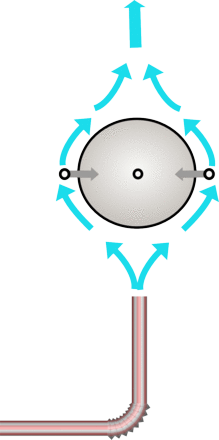 | 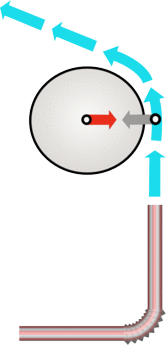 |
| When the ball is in the centre the forces from the air going around both sides cancel out. | As the ping pong ball moves to the left it drags the air stream in the same direction. The air stream exerts an equal and opposite force on it so it is pulled back towards the centre. |
There's a very important physical law called Newton's 3rd law of motion, which says that every action has an equal and opposite reaction, which means that if you push something it pushes back. So because the ball is pulling the air to the left, the air will pull the ball to the right. Moving it back into the centre of the air stream.
In fact you can even tilt the straw or the hair dryer to one side and the ball will stay floating in the angled air stream, due to the Coanda effect.
What has this got to do with the real world?
It has many applications but one of the most important is making a plane fly. A plane is held up by its wings which are designed to deflect air downwards, so by an equal and opposite reaction the plane is pushed upwards.
It is quite obvious how the air flowing under the wing is deflected downwards - it hits a curved surface and as it can't go through it it has to be deflected downwards. The air passing over the top however is also deflected downwards this time, it sticks to the surface and moves down. So this is at least half of what is keeping you in the air.
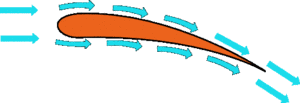
Why does air stick to surfaces?
If a stream of air leaves a curved surface, it will tend to drag the stationary air just beyond the point it leaves, along with it.
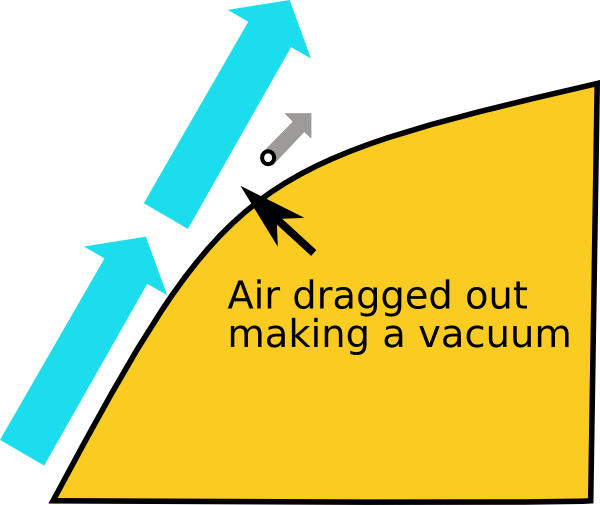
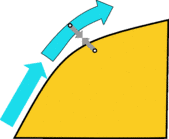
This creates a slight vacuum which bends the air round along the surface making it stick. The vacuum also pulls the surface in the opposite direction creating the force on the ping pong ball or the wing.
However if the surface curves too sharply or the air is moving too quickly the vacuum gets so strong that it can pull air backwards into the gap, creating a swirl of air or a vortex. This is very wasteful of energy and when this happens to a wing it is known as a stall. The wing loses half of its lift and gains a lot of extra drag, neither are ideal when flying, and if this happens near the ground a crash is quite likely.
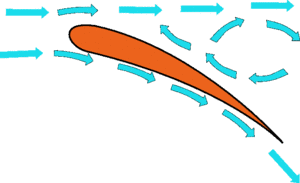
- Previous Simulating Meteor Strikes
- Next Frying pans and Levitation










Comments
Add a comment